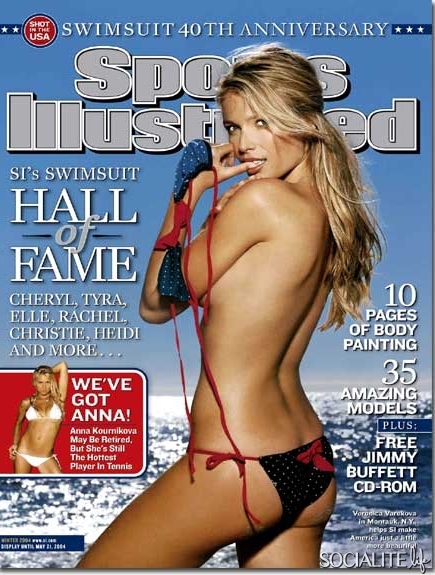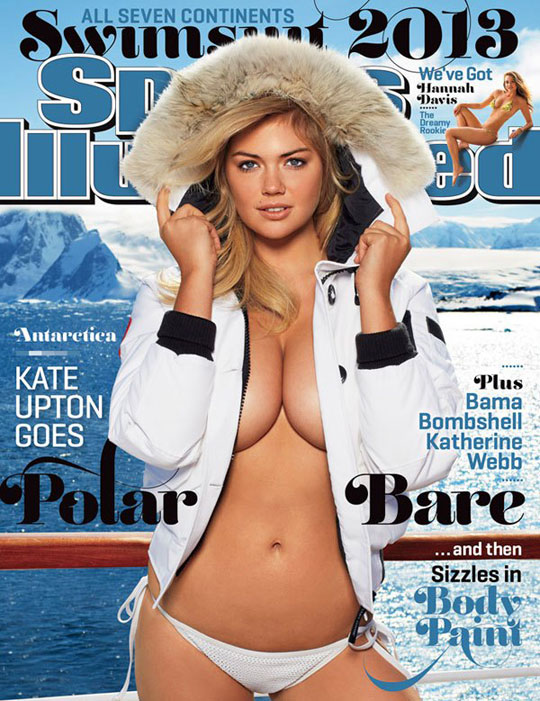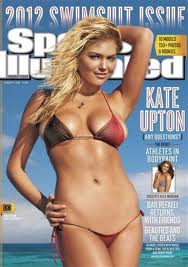

As we take a look at the models of the Sports Illustrated swimsuit models, they all have one similar thing in common. All of them have spectacular bodies, small waist, long legs, large breasts, and hair that just falls over their shoulders. By examining these photographs the viewer can tell that, "showing women less in athletic action and more in posed photographs enables a media outlet to construct a reality that serves to maintain the status-quo ideology of women as different and inferior athletes in comparison to men (Fink and Kensick 11)." This plays an important part in this particular magazine because it is labeled and referenced as a sports magazine.


As readers look at the women that cover Sports Illustrated swimsuit issues they might
feel the attempt to replicate the womanly figures that they see on the magazine. They
might start to workout; start to lose weight, and maybe even dress themselves up a little
more to look more appealing. In the images above both models are showing off their butts,
as well as just a side view of their breasts, letting women know to show off what they and
be free, as the one on the left has her top off, be free is the message being sent to the
audience here. Most women know that, "much of the public discourse about, and many of the
ways boys/men consume, the swimsuit issue reinforce the belief that nature compels male
attraction to and enjoyment of sexual representations (Davis 52)." This shows that women
have to look good to be desired by men and therefore have to do these things that make
them more attractive in their minds such as; workout, and dress up a little more. Just
like the magazine, in real life males are attracted to enjoy sexual representations so
women feel the need to give it to them.
As a viewer we can see the women on the cover photo of Sports Illustrated swimsuit
issue, but they cannot see us at all. "This sort of visuality, in which one subject is
seen without ever seeing, and the other sees without ever being see, Foucault called
surveillance (Rose 229, 230)." This puts the model with less power than the viewer because
the viewer can see her but the model does not know what the viewer is specifically looking
at. "Surveillance studies scholars stress that we live in a surveillance society (Allmer
566)."
 |
 |
| Psychoanalysis | Audience Studies |
Davis, Laurel R. The Swimsuit Issue and Sport: Hegemonic Masculinity in Sports Illustrated. Albany: State University of New York, 1997. Print.
Fink, Janet S., and Linda Jean Kensicki. "An Imperceptible Difference: Visual and Textual Constructions of Femininity in Sports Illustrated and Sports Illustrated for Women." Mass Communication and Society 5.3 (2002): 317-39. Print.
Rose, Gillian. Visual Methodologies: An Introduction to Researching with Visual Materials. London: SAGE, 2012. Print.
http://sportsillustrated.cnn.com/swimsuit/
May 8, 2013